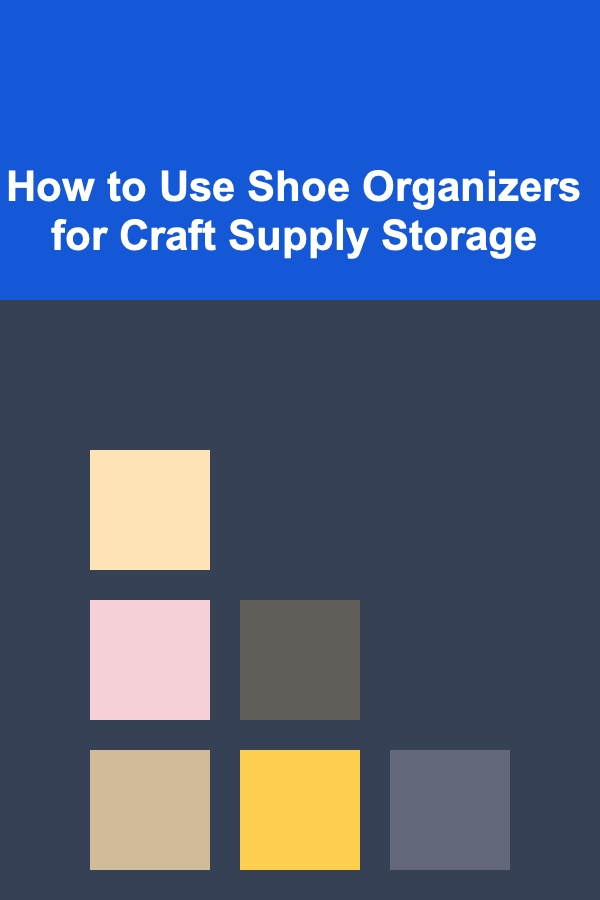
How To Plan Your Garden Layout for Success
ebook include PDF & Audio bundle (Micro Guide)
$12.99$10.99
Limited Time Offer! Order within the next:

Gardening is an immensely rewarding activity, offering not only the joy of nurturing plants but also the satisfaction of creating a beautiful, functional space that contributes to the well-being of both the gardener and the environment. Whether you're an experienced gardener or a beginner, one of the most critical steps in ensuring a successful garden is proper planning and layout. A well-thought-out garden layout can optimize space, promote healthy plant growth, and minimize maintenance tasks. In this article, we'll explore how to plan your garden layout for success by considering factors such as garden size, plant types, environmental conditions, and design principles.
Assess Your Garden Space
Before diving into plant selection and design, it's crucial to assess the space available for your garden. This will allow you to make informed decisions about how to maximize the use of your land and create an efficient, sustainable garden.
1.1. Measure Your Garden Area
The first step is to measure the dimensions of your garden. If you're working with a large garden, take accurate measurements of the length and width of the space. For smaller gardens, even a rough estimate can be sufficient. Be sure to account for any obstructions such as trees, buildings, or fences that may influence the available planting area.
1.2. Evaluate Sunlight and Shade
The amount of sunlight your garden receives is one of the most important factors in determining what plants will thrive. Spend some time observing how sunlight moves across your garden throughout the day. Take note of areas that are sunny for most of the day and areas that remain shaded for extended periods.
- Full sun areas receive at least 6-8 hours of direct sunlight daily and are ideal for many vegetables, herbs, and flowers.
- Partial sun/partial shade areas get 3-6 hours of sunlight and can support a variety of plants that tolerate a mix of sunlight and shade.
- Shade areas, especially those with little direct sunlight, are perfect for plants that thrive in low-light conditions, such as ferns, hostas, and some types of flowers.
Understanding where sunlight falls in your garden will help you place plants in the most appropriate locations to maximize their growth potential.
1.3. Consider Drainage and Soil Quality
Good drainage is essential for plant health. Poor drainage can lead to root rot and other problems. Take note of areas where water tends to pool, as these may be unsuitable for certain plants. On the other hand, dry spots may require extra attention to ensure plants receive adequate moisture.
Check the soil quality as well. If you're working with heavy clay soil, it can become compacted and may not allow for proper root development. Sandy soil, while well-draining, may lack nutrients. In both cases, you can amend the soil with compost or other organic matter to improve its texture and fertility.
Understand Your Plant Needs
Every plant has specific requirements for light, water, and nutrients, so it's essential to understand these factors when planning your garden layout. By choosing plants that match the conditions in your garden, you'll set yourself up for success.
2.1. Know Your Hardiness Zone
Each plant has an ideal climate and temperature range. Understanding your local hardiness zone helps you select plants that are well-suited to your area. The USDA Plant Hardiness Zone Map is a valuable tool for this purpose, as it divides regions into zones based on their average annual minimum temperatures. Choose plants that are suitable for your zone to ensure they can survive the local climate.
2.2. Companion Planting
Companion planting is a technique that involves pairing plants together to promote mutual growth. Certain plants work well when planted near each other, while others should be kept apart. For example, beans and peas are excellent companions for corn because they fix nitrogen in the soil, benefiting the corn's growth. Conversely, tomatoes and potatoes should be kept apart because they are both prone to similar diseases.
Researching beneficial plant pairings and avoiding harmful ones will help you design a more efficient and productive garden.
2.3. Consider Plant Height and Spread
When planning your garden layout, it's crucial to consider the size and growth habits of each plant. Some plants grow tall, while others spread horizontally. By understanding these growth patterns, you can place taller plants at the back of the garden (or in the center of a raised bed) so they don't block sunlight from smaller plants. Similarly, place plants that spread, like groundcovers or spreading vegetables, in areas where they won't crowd other plants.
Create a Functional Design
A successful garden layout isn't just about fitting plants into the available space; it's also about creating a functional, aesthetically pleasing design. The design of your garden should consider practical aspects, such as accessibility, ease of maintenance, and visual appeal.
3.1. Plan for Accessibility
Make sure that your garden layout allows for easy access to all areas. Paths or walkways should be wide enough to navigate with a wheelbarrow or gardening tools. Raised beds are an excellent solution for smaller spaces or gardens with poor soil. They also make it easier to tend to plants without bending down excessively.
If you plan to have a vegetable garden, allow enough space between rows to give your plants room to grow while also making it easy for you to harvest.
3.2. Design with Zones
Dividing your garden into zones can help create a balanced layout. For example, create distinct zones for vegetables, herbs, flowers, and ornamental plants. Place plants with similar needs together in the same zone to make care and maintenance more straightforward. You can also experiment with different garden styles, such as a formal layout with neatly organized rows or a more natural, wild look with plants intermixed.
3.3. Consider the Aesthetic Appeal
Beyond function, your garden should be visually appealing. Think about color schemes, plant textures, and the overall atmosphere you want to create. Some gardeners prefer vibrant, colorful flowers, while others prefer a more minimalist look with green foliage and the occasional bloom.
You can create focal points using taller plants, statues, or even water features. Remember that gardens are dynamic, and the layout should account for seasonal changes in both plant growth and appearance. For example, place early-blooming plants where they won't be overshadowed by late-blooming ones.
Plan for Sustainability and Maintenance
A garden that thrives with minimal effort is one that has been planned with sustainability and ease of maintenance in mind. Consider how much time and effort you can realistically invest in your garden and plan accordingly.
4.1. Incorporate Mulching and Irrigation
Mulch helps retain moisture, suppress weeds, and regulate soil temperature, reducing the amount of maintenance required. When planning your garden, think about how you can incorporate mulching into your design, especially in high-maintenance areas like vegetable beds.
Irrigation is another important consideration. If you live in a dry climate, installing a drip irrigation system can save water and deliver it directly to the plant roots. Rainwater harvesting systems are also an eco-friendly way to supplement your watering needs.
4.2. Plant Native Species
Native plants are well adapted to local conditions, which means they typically require less water, fewer chemicals, and less overall maintenance. When planning your garden, prioritize native plants to support local wildlife and reduce the resources needed to maintain the garden.
4.3. Think Long-Term
Consider the long-term growth of your plants. Some may start small but grow large over time, while others may need to be replaced after a few years. Plan for how your garden will evolve and how to maintain its health over time. Be sure to allow space for new plants as the garden matures and changes.
Create a Planting Schedule
A key to a successful garden layout is understanding the timing of plant growth, blooming, and harvest. A planting schedule helps you stay organized and ensures that you maximize your garden's productivity.
5.1. Seasonal Planting
In many climates, gardens change with the seasons. Some plants may thrive in spring and fall but struggle in the heat of summer or the cold of winter. Plan your garden layout to account for seasonal shifts, allowing you to grow different crops at various times of the year.
5.2. Succession Planting
Succession planting is a strategy where you plant crops in stages, ensuring that as one crop is harvested, another can take its place. This technique is particularly useful for vegetables and can help you maximize your garden's productivity throughout the year.
5.3. Continuous Maintenance
Create a maintenance schedule that includes regular watering, pruning, and harvesting. A well-maintained garden will reduce stress on plants and make the gardening process more enjoyable.
Conclusion
A successful garden layout requires careful planning, an understanding of your garden space and plant needs, and a clear vision of the overall design. By considering factors such as sunlight, soil quality, plant compatibility, and garden aesthetics, you can create a garden that thrives year after year. Whether you're growing vegetables, flowers, or ornamental plants, the effort you put into planning your garden layout will pay off with a flourishing, productive, and beautiful garden space. Remember, every garden is unique, and the key is to tailor your design to suit your space, climate, and gardening goals. Happy gardening!

How to Clean Your Home Using Essential Oils
Read More
How to Maximize Home Security in an Urban Setting
Read More
How to Offer QuickBooks or Xero Training for Small Businesses
Read More
How to Use Online Coaching Platforms to Make Money
Read More
How to Use Shoe Organizers for Craft Supply Storage
Read More
How to Protect Your Brain from Cognitive Decline
Read MoreOther Products

How to Clean Your Home Using Essential Oils
Read More
How to Maximize Home Security in an Urban Setting
Read More
How to Offer QuickBooks or Xero Training for Small Businesses
Read More
How to Use Online Coaching Platforms to Make Money
Read More
How to Use Shoe Organizers for Craft Supply Storage
Read More